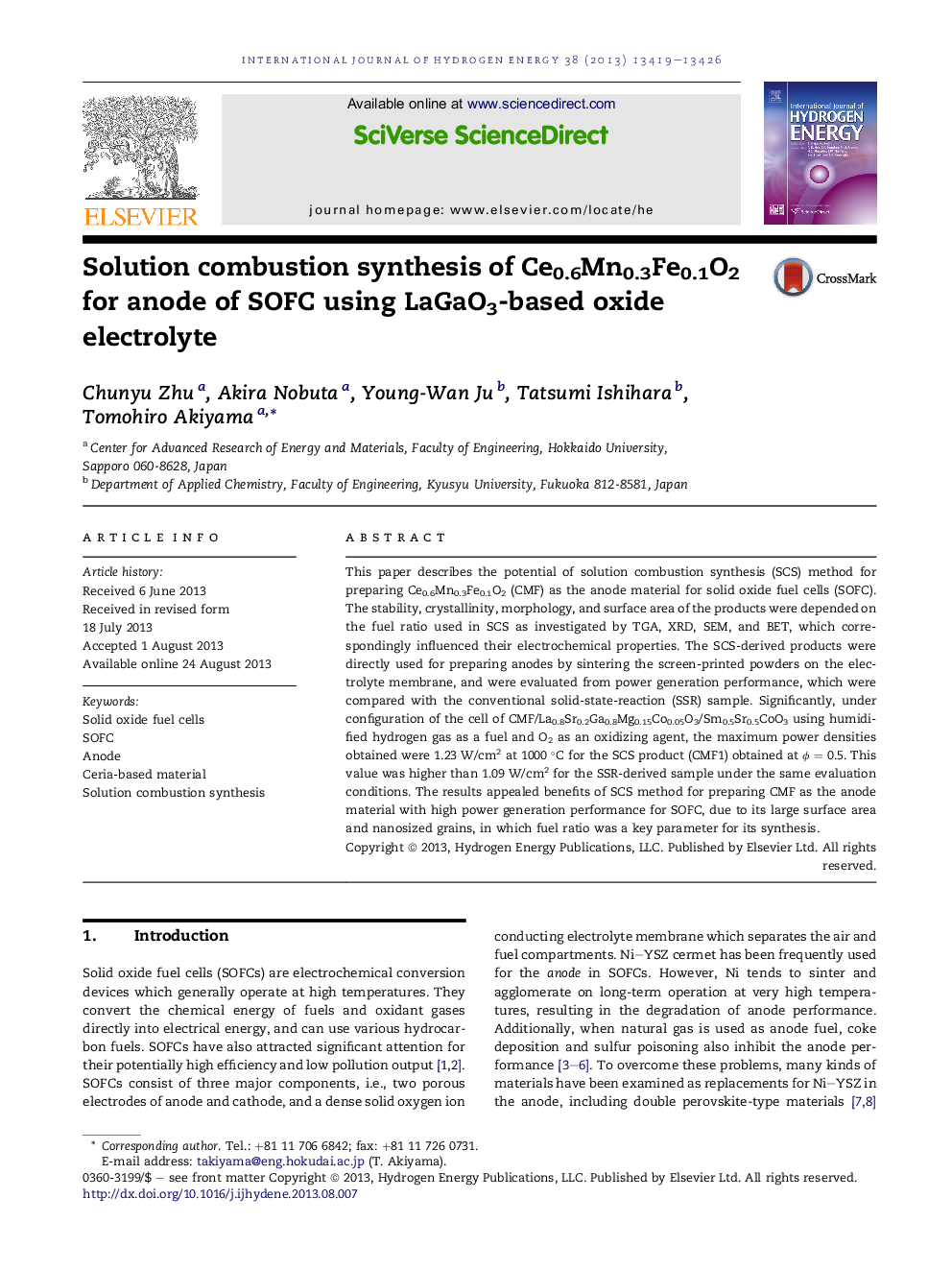| Article ID | Journal | Published Year | Pages | File Type |
|---|---|---|---|---|
| 1273348 | International Journal of Hydrogen Energy | 2013 | 8 Pages |
•Production of Ce0.6Mn0.3Fe0.1O2 (CMF) by solution combustion synthesis was succeeded.•CMF synthesized with low fuel content exhibited the best power generation performance.•The maximum power density reached 1.23 W/cm2 at 1000 °C for SCSed CMF.•SSRed CMF showed a maximum power density of 1.09 W/cm2 at 1000 °C.
This paper describes the potential of solution combustion synthesis (SCS) method for preparing Ce0.6Mn0.3Fe0.1O2 (CMF) as the anode material for solid oxide fuel cells (SOFC). The stability, crystallinity, morphology, and surface area of the products were depended on the fuel ratio used in SCS as investigated by TGA, XRD, SEM, and BET, which correspondingly influenced their electrochemical properties. The SCS-derived products were directly used for preparing anodes by sintering the screen-printed powders on the electrolyte membrane, and were evaluated from power generation performance, which were compared with the conventional solid-state-reaction (SSR) sample. Significantly, under configuration of the cell of CMF/La0.8Sr0.2Ga0.8Mg0.15Co0.05O3/Sm0.5Sr0.5CoO3 using humidified hydrogen gas as a fuel and O2 as an oxidizing agent, the maximum power densities obtained were 1.23 W/cm2 at 1000 °C for the SCS product (CMF1) obtained at ϕ = 0.5. This value was higher than 1.09 W/cm2 for the SSR-derived sample under the same evaluation conditions. The results appealed benefits of SCS method for preparing CMF as the anode material with high power generation performance for SOFC, due to its large surface area and nanosized grains, in which fuel ratio was a key parameter for its synthesis.
